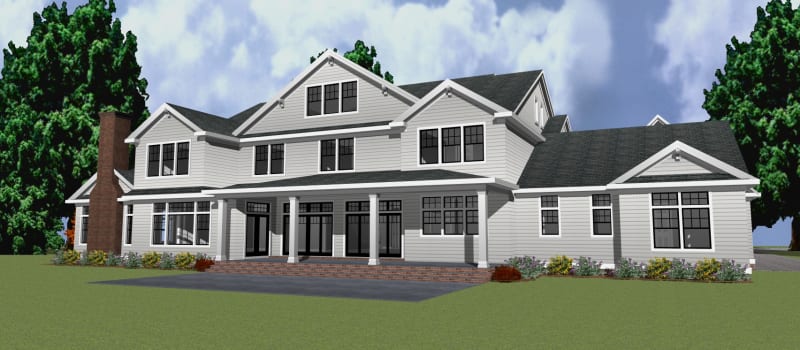jerseyshore
Structural
Normally when I design roof framing for a house it's all structural ridge/hip/valleys. If it was simple, they wouldn't be hiring an engineer (generally).
Example below of this house with a tradition 6/12 sloped main roof, 46 ft deep front to back, and a matching 6/12 46 ft wide hip roof off the back, flanked by a couple of dormers on either side. Attic floor joists run front to back as well.
Around here most architects do their own structural work and majority of the time it's typical gable-type framing with ridge & valley nailers, not beams, for a roof just like in this example. They wouldn't even think twice to do it that way, even if it doesn't work on paper. Then they try to make me feel like the crazy one for suggesting structural ridges.
So what rules of thumb do you guys use for determining when hips or dormers become too big to work without structural beams?

Example below of this house with a tradition 6/12 sloped main roof, 46 ft deep front to back, and a matching 6/12 46 ft wide hip roof off the back, flanked by a couple of dormers on either side. Attic floor joists run front to back as well.
Around here most architects do their own structural work and majority of the time it's typical gable-type framing with ridge & valley nailers, not beams, for a roof just like in this example. They wouldn't even think twice to do it that way, even if it doesn't work on paper. Then they try to make me feel like the crazy one for suggesting structural ridges.
So what rules of thumb do you guys use for determining when hips or dormers become too big to work without structural beams?


![[tongue] [tongue] [tongue]](/data/assets/smilies/tongue.gif)